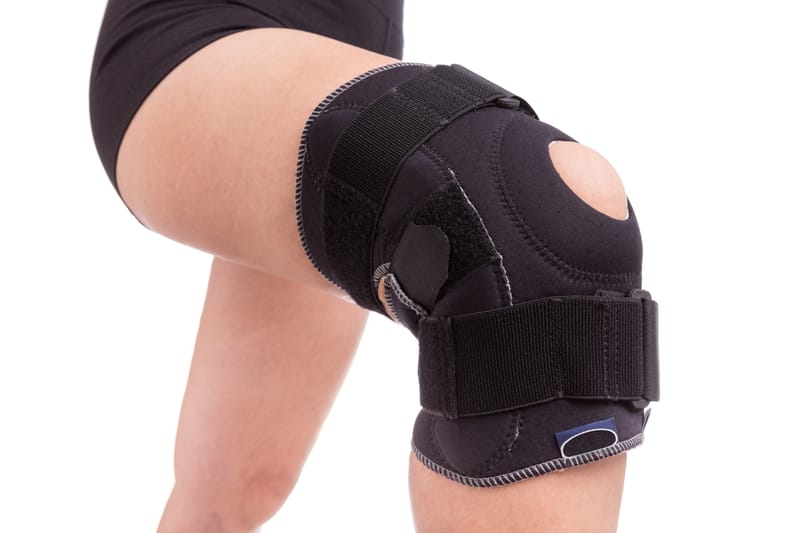
Research isn’t clear if or how much knee braces make a difference for people with osteoarthritis. Some people see an improvement in their pain and mobility. Others don’t see any change. In general, braces provide knee support for osteoarthritis and can reduce knee pain. Each type of knee brace for osteoarthritis works in different ways. Braces may apply compression (pressure) to your soft tissues, stabilize your knee, or redistribute your weight.
There are different types of knee braces depending on how bad your knee pain is and the location of your arthritis (under the kneecap, outside or inside of the leg):
Sleeve brace - This most common type of brace is for mild knee pain or stiffness. It offers extra support and compresses your leg, which can ease swelling and warm the knee joint.
Web brace - While a sleeve brace gives overall support, the silicone webbing on a web brace tightens in specific places as you bend and straighten your knee.
Unloader brace - This brace has metal bands that wrap around your thigh and calf and connect to a hinged bar. It creates an adjustable frame that helps you to shift pressure on your knee.
According to the Arthritis Foundation, some benefits of wearing a brace may be enhanced stability, reduced swelling and joint pressure, increased confidence during use.
There are several types of braces used to help treat osteoarthritis:
• Functional or supportive: These support you if you’ve already injured a joint.
• Unloader or offloaded: These help reduce pressure on key areas.
• Prophylactic: These protect you from injury, usually when you play a sport.
• Stabilizer: These limit the movement of a joint to allow time for healing. They’re most often used after you’ve had surgery or a joint set in place.
You should only wear one if it decreases pain with activity and helps you move better.
A compression sleeve is a stretchy brace that fits snugly over your knee. The brace hugs the area around your knee to help reduce swelling and increase comfort. It can also help you feel more stable by improving your awareness of your knee’s location in space (proprioception).
Some compression sleeves have a hole in the front. Those can be helpful if you have more arthritis in the kneecap joint (the front of your knee). They help line up the kneecap in the "proper groove."
Some compression sleeves also have adjustable straps. This feature allows you to customize the tension and fit and help the brace to stay in place. The right fit provides compression without feeling too tight or causing swelling below your knee.
An unloader knee brace is a longer and more rigid hinged brace. Unloader braces are mostly for people who have arthritis on the medial (inner) side of the knee. When you have medial arthritis, the brace helps force more of your weight to be born through the lateral (outer) side of the knee and less through the worn-outmedial side. An unloader brace may also help with osteoarthritis on the outer side of your knee.
There’s no one-size-fits-all answer. The best knee brace for osteoarthritis depends on your individual diagnosis and body type.